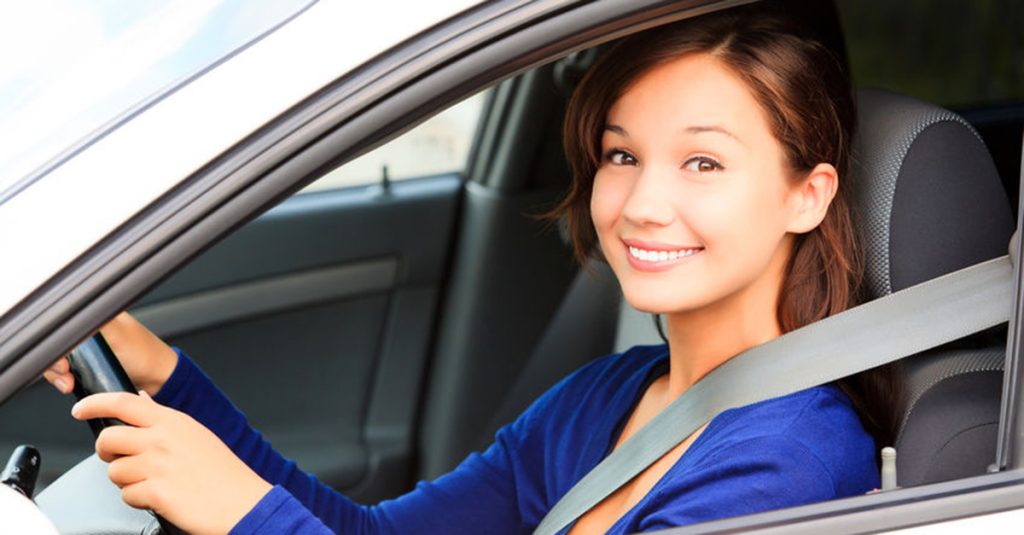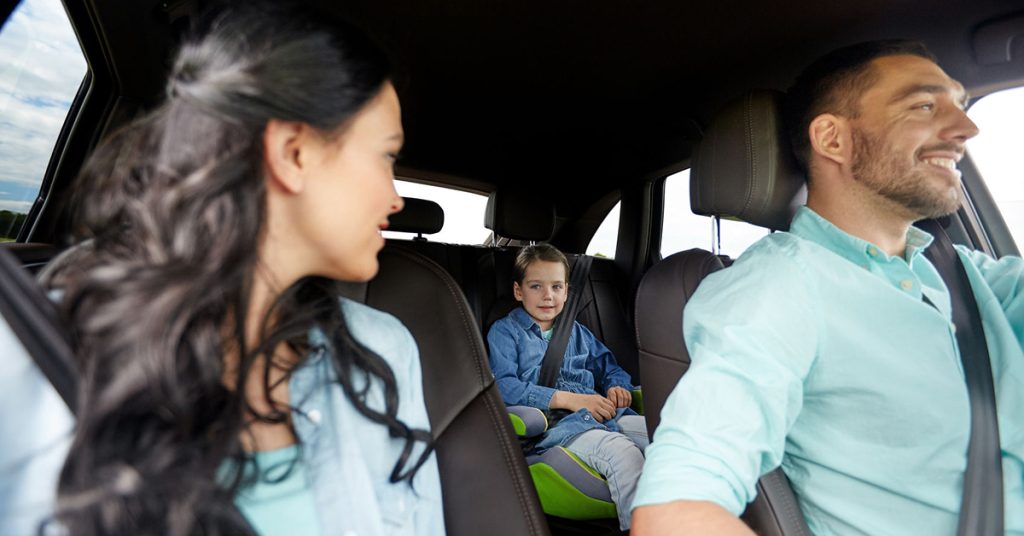Posts Tagged ‘seat belts’
For Teens, Driving Safely Starts With Seat Belts
Teen Driver Safety Week is Oct. 18-24, 2020. Breakstone, White & Gluck is sharing articles to encourage parents and teens to discuss safe driving decisions.
 Seat belts are a simple step for safety. As a parent, you probably remind your child to buckle their seat belt before each ride. But when your teen becomes a licensed driver, you won’t always be there. Still, what you say matters. Teens are twice as likely to wear a seat belt as a driver or passenger when parents set rules and monitor their driving behavior, according to the Teen Driver Source website, which is operated by the Children’s Hospital of Philadelphia.
Seat belts are a simple step for safety. As a parent, you probably remind your child to buckle their seat belt before each ride. But when your teen becomes a licensed driver, you won’t always be there. Still, what you say matters. Teens are twice as likely to wear a seat belt as a driver or passenger when parents set rules and monitor their driving behavior, according to the Teen Driver Source website, which is operated by the Children’s Hospital of Philadelphia.
Tell your teen you expect them to wear a seat belt whenever they travel in a motor vehicle. This includes when they drive and when they are traveling as a passenger. As a second step, put this in writing. Find a teen driving safety agreement with your teen and state this is one of your expectations. If you catch your teen driving without their seat belt, you can step back their access to the keys until you have a discussion.
Seat belts are required by law. Wearing a seat belt is required by law in Massachusetts. Drivers and their passengers must both wear seat belts.
Seat belts protect against deadly force. The goal isn’t to scare your teen. But the reality is cars, trucks and other vehicles are heavy and powerful machinery. We all need to wear seat belts to protect against the potential force of a car crash.
Seat belts reduce the risk of fatal injury to front seat passengers by 45 percent, according to Teen Driver Source. They also reduce the risk of moderate to critical injury by 50 percent.
Seat belts also reduce the risk of ejection from the vehicle. Those who do not wear seat belts are 30 times more likely to be ejected from a vehicle during a traffic crash, according to Teen Driver Source. When a person is ejected from their vehicle, they are more likely to die in a crash. This was the case for 3 out of 4 people.
How seat belts prevent injuries. Seat belts are designed to spread crash forces across the stronger bony parts of the body, including the shoulders, rib cage and pelvis, according to the Institute for Highway Safety (IIHS). They are also designed to prevent occupants from being ejected from a vehicle.
Drivers and passengers should all wear seat belts – to protect themselves and each other. If there is an accident and one of the vehicle’s occupants is not wearing one, they could be ejected and increase the risk of injury to others in the vehicle.
In a frontal crash, drivers and front passengers are left at an increased risk for injury if the back-seat passengers are not wearing seat belts. Exposure to unbelted occupants increases the risk of injury or death to other vehicles by 40 percent, according to the IIHS.
More People Are Wearing Seat Belts in Massachusetts
The good news is more people appear to be wearing seat belts in Massachusetts. In 2018, the state conducted a seat belt usage observation study, reporting 81.58 percent of drivers and front outboard passengers were observed to be wearing seat belts. This was 7.9 percentage points over the year before and the highest ever observed rate in Massachusetts.
To reach this number, the state observed 28,265 drivers and front outboard passengers in 24,2145 vehicles at 147 observation locations. You can learn more by reading the study.
According to the IIHS and other organizations, states with primary enforcement seat belt laws have higher seat belt use rates. In 2019, the IIHS reported states with primary enforcement laws saw 91 percent seat belt use compared to 86 percent. Massachusetts has a secondary enforcement seat belt law, meaning police can stop drivers for traffic violations, then issue citations for failure to wear seat belts. But police cannot stop drivers just because they are not wearing seat belts.
If you are parent or teen, we hope this is good background information. The point is you should wear your seat belt every time you ride – and encourage others to do the same.
Free Legal Consultation – Boston Personal Injury Lawyers
With more than 100 years combined experience, Breakstone, White & Gluck fights for the rights of those injured by the negligence or wrongdoing of others. Our personal injury attorneys specialize in the handling of car accidents, truck accidents and bus collisions in the Boston area. If you have been injured, learn your legal rights. For a free legal consultation, call our attorneys at 800-379-1244 or 617-723-7676. You can also use our contact form.
To learn more about teen driving safety and other topics, please visit our Project KidSafe campaign page.
Preventing Injuries: Check Your Seat Belts and Child Passenger Safety Seats
 There is nothing more important than protecting your family and other passengers in the car. Many of us drive less often in the winter in Massachusetts. But in a few weeks, families will be back in the car more for afterschool sports, activities and weekend trips.
There is nothing more important than protecting your family and other passengers in the car. Many of us drive less often in the winter in Massachusetts. But in a few weeks, families will be back in the car more for afterschool sports, activities and weekend trips.
Take a few minutes now to inspect your vehicle’s seat belts and child passenger safety seats. Make sure this equipment is working and properly adjusted to fit each child. Replace car seats if your children have outgrown them. Then talk to your family about the importance of always wearing a seat belt.
Dangers on the Road for Children
- Roughly 3 children in the U.S. die each day as a result of motor vehicle accidents, according to the National Highway Traffic Safety Administration (NHTSA).
- Car accidents increased 5.6 percent nationwide from 2015 and 2016. Child deaths in motor vehicle accidents increased 8 percent.
- Children were occupants in 74 percent of fatal car accidents in 2016. They were pedestrians in 20 percent of cases and were on bikes in about 5 percent of cases.
Seat Belt: Buckle Up, Every Ride
Your car should have working seat belts. Do a visual inspection and also sit in each seat while buckling up. If your seat belts are not working, call your auto dealer to have them repaired. Then, wear your seat belt on every trip, no matter how short. Insist your children and other passengers do as well. Drivers carry a lot of influence when it comes to seat belt use, especially parents.
Properly buckle your children in, especially when they are just transitioning from booster seats to seat belts. As they get older, they will start to buckle themselves in, but continue to check their seat belt before you start driving, even if just from the front seat. You want to make sure the straps are not tangled or jamming. Buckle up unused seat belts to discourage children from playing with them. Always lock your power windows so children cannot operate them from the backseat and finally, never leave your children alone in motor vehicles to play with seat belts unsupervised in your vehicle.
Watch this video to see how to buckle your child in:
Teenagers may need the most reminders, whether they are passengers or drivers. In 2016, 47 percent of young drivers who died in crashes were not wearing seat belts, according to the NHTSA. As a parent, you have to teach your teenager to be both a safe driver and a safe passenger and always, always wear seat belts. The decisions your children make while driving with friends are critical.
Massachusetts Law on Seat Belts
In Massachusetts, children must start wearing seat belts at age 8 or when they outgrow their child passenger safety seat.
The Massachusetts seat belt law requires drivers and passengers to wear seat belts while traveling in the front and back of vehicles. According to the Governors Highway Safety Association (GHSA), Massachusetts is one of 15 states which have a secondary enforcement seat belt law. While seat belts must be worn, drivers can only be cited for a seat belt violation after they are stopped for an unrelated traffic offenses. In primary enforcement states, drivers can be pulled over solely for not wearing a seat belt.
Seat belt use was 89.7 percent in 2017, according to the NHTSA. This increased about 5 percent from 2009, which is good news. Except that seat belt use was the lowest in the Northeast. Some 86.5 percent of drivers and passengers buckled up, compared to 94.5 percent out West. The best thing you can do is go for a 100 percent seat belt rate in your car.
Child Safety Seats: The Challenge
Car accidents are the leading cause of death for children and teenagers, according to the Centers for Disease Control and Prevention (CDC). Safe Kids Worldwide reports child passenger safety seats can reduce the risk of death by 71 percent. The problem is car seats can be hard to install, expensive and are frequently recalled.
Massachusetts has a Child Passenger Safety Seat law to protect young passengers:
- Children who are younger than 8 years old (or under 57 inches tall) must use an age-appropriate federally-approved child safety seat.
- Child safety seats should be placed in the back seat (if your vehicle doesn’t have a back seat, you can’t install the car seat in the front seat).
- Older children must wear a seat belt. It is recommended that children sit in the back seat until they reach age 13.
Parents must use an age appropriate car seat. Infants typically use a rear-facing car seat until age 2, then grow into a forward facing car seat and then a booster seat. Check these guidelines for help purchasing a child passenger safety seat.
Help Finding the Right Child Passenger Safety Seat
Common Mistakes in Fitting Car Seats
- Rear-facing infant/convertible seats are often installed with the wrong amount of incline while forward-facing car seats can be fit too loosely.
- A forward-facing seat should not be able to move more than an inch laterally. In one study, the NHTSA found more than 17 percent of forward-facing car seats were able to move more than 2 inches.
- A common mistake with booster seats is the lap belt position. Lap belts should sit on the child’s hips and thighs, not the abdomen or rib cage.
Source: NHTSA, National Child Restraint Use Special Study, June 2015
Where You Can Find Help
If you are having trouble with your car seat installation, ask if your local police department offers free car seat inspections. You can also check this website to find other resources in the area.
Child Car Seat Safety Information from Manufacturers
Register your child safety seats with the manufacturer so you will be notified if there is a recall. Even when you carefully research a product, these recalls can and do happen. Graco has recalled millions of child car seats, most for unsafe buckles, but also other defects. Other manufacturers have issued recalls when seats have failed to mount and when pieces posed a potential choking hazard.
Finally, read the manufacturer’s instructions for set up and check the expiration date. Many people do not realize that car seats have an expiration date.
About Breakstone, White & Gluck
For more than 30 years, the lawyers of Breakstone, White & Gluck have represented individuals and families who have been injured by negligent and reckless drivers in Massachusetts. Our Boston car accident lawyers are committed to fighting for justice for every client and have been consistently recognized for our results by Super Lawyers, U.S. News – Best Law Firms and Martindale Hubbell.
For a free legal consultation, contact us at 800-379-1244 or 617-723-7676 or use our contact form.



